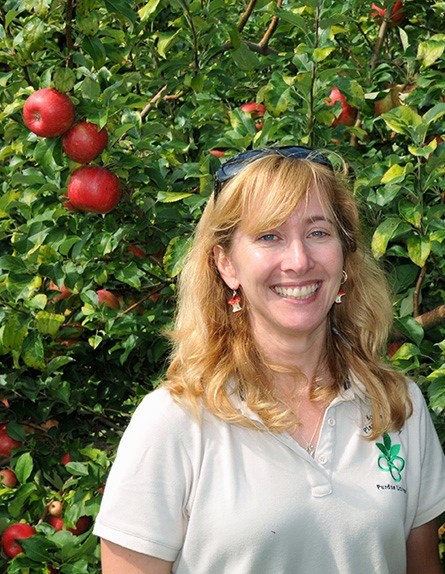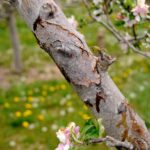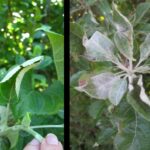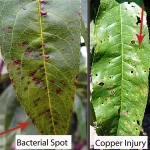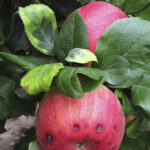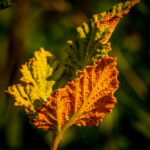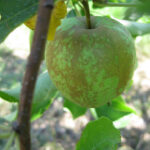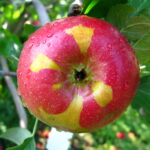Leaving behind the fourth or fifth wettest April, rains continue in May. Many growers are confronted with serious issues with respect to scab management. Depending where you are in the state, development is at anywhere from petal fall to 2nd cover (kings at 10-11mm) or even further along. Against some pretty grim probabilities, most of[Read More…]
Fire blight, caused by the bacterium Erwinia amylovora, is a devastating disease of apples and pears. Epidemics of the disease develop quickly, particularly in a climate of warm, wet weather, with hail events. The type of management program developed by each orchard will vary considerably based upon a variety of orchard factors, including apple variety,[Read More…]
All that new, succulent growth needs to be protected to prevent primary (and even secondary!) scab (Fig. 1). We’re past the point where copper can be safely used, so protectant fungicides for scab control at this stage include mancozeb, ziram and captan. As an added bonus, all of these protect against the summer rots, and[Read More…]
As of right now, we simply do not know if we will have crops from our woody fruit producing plants, from apples to grapes to peaches. Remember: The ability to produce fruit is determined in the spring with flower development. Any factor, whether abiotic, insect or pathogen, that interferes with flower development will impact fruit[Read More…]
In Indiana, our ‘normal’ or average weather is one of extremes, punctuated with an occasional glorious summer day of sun and 76 degrees F. This year has been one of flooding and droughts, freezes and scorching heat. Again. With these weather extremes come physiological disorders and summer fruit rots, for those lucky enough to even[Read More…]
With increasing rains and extremely hot weather, this is a reminder that bitter rot weather is in full swing (along with black rot, white rot, sooty blotch and flyspeck!). Caused by fungi in the genus Colletotrichum, bitter rot thrives during warm, wet conditions, especially weather events that maintain fruit wetness for 8-12 hours, due to[Read More…]
With last week’s thunderstorms and severe weather, fire blight continues to threaten crops: Hail can physically damage the tree and allow entry of the bacteria (Fig. 1) and secondary spread of the pathogen. Secondary spread of fire blight develops when stormy weather (especially hailstorms) occurs after the primary (blossom) infections. The amount of fire blight[Read More…]
When Neil Young was singing about “Rust Never Sleeps,” I doubt he meant orange rust, caused by the fungus Gymnoconia nitens (formerly Arthuriomyces peckianus). But who knows? Maybe he did? And he’d be right: This rust is definitely not sleeping! Despite unusually dry conditions throughout much of the state, orange rust is still making its presence known[Read More…]
Currently, the US Drought Monitor (https://droughtmonitor.unl.edu/CurrentMap/StateDroughtMonitor.aspx?IN) places Indiana in the ‘abnormally dry’ category. With no rain in our 10 day forecast, I expect that to only get worse, and with it, powdery mildew on all fruit crops. Powdery mildew is identified by the white, powdery growth on leaves and shoots that consist of the fungal[Read More…]
Tank mixtures (or tank-mixing) describes the process where multiple crop protection chemicals are combined in a single tank for simultaneous application. Tank-mixing pesticides allows the grower to make a single application but manage multiple pests AND pesticide resistance issues. All specialty crops, especially fruit crops, have more pests and pathogens than field crops, along with[Read More…]
